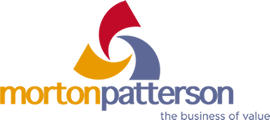In the last issue, I wrote about the steps to writing a successful proposal, but now you’ve submitted your proposal, what should you do?
Do you sit and wait or be proactive?
In your email, set a date and time when you will get in touch to answer any questions they may have, or if they wish, they can get in touch.
But this is predicated on what happened before, as you should be clear on the project’s objectives, how you will measure success, and the value of the results. One of my favourite questions is, what would impact your business if things stayed the same?
In a meeting, I calculated with a client how much revenue they lost by the bad reviews and cancellations. The figure was sobering and forced him to look at the reality of their situation and what would happen if he did nothing.
I think you should also have asked – Why me/Why our organisation? Why have you chosen to do this now, and why this way – questions? These are powerful questions and as well as clarifying your value they will give you tremendous insight.
Every business is different, so it’s important to know about the decision-making process before submitting the proposal and, importantly, double checking which element they would still pursue should priorities change.
Priorities often change quickly in larger organisations, and asking what element they would go ahead with despite any changes in priorities often makes it easier for the decision-maker to come back to you about the proposal.
By the end of your meeting, they should feel understood and can see the future they desire and that you or your business have the resources and skills to help them achieve it.
That said, once you’ve submitted your proposal, build a plan of action for managing that period between submission and waiting for a decision – also known as the silent period. If you’re working with an internal sponsor, that plan can include liaising with senior management without compromising the bid’s integrity.
Ultimately, the success of your proposal being accepted depends on who is making the final decision (that is why it is vital to speak with the economic buyer), timing, urgency and, more importantly, how you handled the previous conversations, as your proposal should be a summary document, not an exploration.
